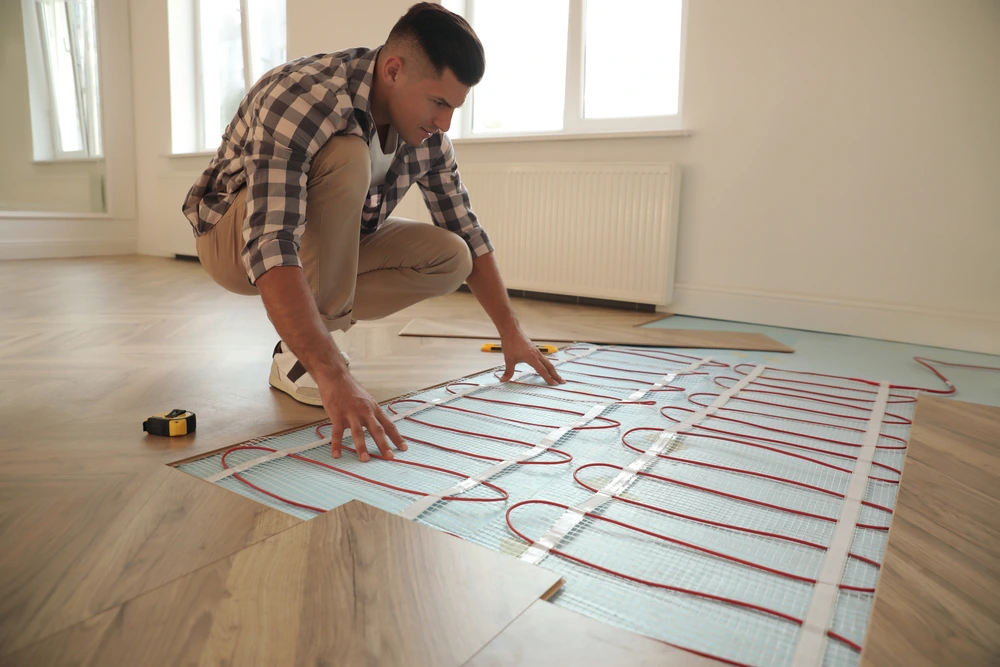
Radiant heating offers a quieter and more energy-efficient alternative than traditional forced air systems, warming your home more evenly while making an excellent choice for those suffering from allergies.
Radiants that are concealed beneath the floor provide more room to move furniture freely while creating an intimate ambiance. You can learn more about radiant heat and its benefits by checking out this blog from the team at PlumbTech.
Let’s explore the ten innovative ways radiant heating can enhance your living space:
1. More Energy-Efficient
Radiant heat systems save energy and money through reduced heating bills as they do not have to reach as high a temperature to achieve desired heating results. Radiant systems also eliminate duct losses, saving even further on heating bills.
Hydronic radiant heating uses water from a boiler to distribute warmth throughout your home, while electric radiant systems use cables or tubing to generate warmth for supplemental heating.
2. Less Expensive to Operate
Radiant systems are extremely energy efficient, not experiencing heat loss issues as much as conventional forced air systems – making them far more cost-effective than their alternatives.
Without the cycle of cold and hot air created by forced-air systems, radiant systems don’t spread allergens around your home – an advantage especially beneficial to families with allergies.
Programmable thermostats allow you to fill the concrete floor with heat during off-peak electricity rates and reduce heating bills by “charging” it with heat during such times.
3. Less Expensive to Install
Radiant heating systems don’t use ducts, making them less prone to air leakage and energy waste. Furthermore, radiant systems require lower temperatures for heating a space, saving money on monthly utility bills.
Radiant heat provides more design freedom in your home without incorporating radiators or ductwork. Furthermore, radiant heating is an economical choice that makes custom home building and renovation projects possible.
4. Less Expensive to Maintain
Compared to forced air systems, radiant heat systems tend to be less costly to maintain than their forced counterparts, though this often depends on system design and operating conditions.
Radiant heat systems typically utilize electric resistance heating wires placed beneath floors to emit warmth upward. They’re often installed as replacements or additional heating in existing structures.
Hydronic radiant systems utilizing a boiler and hot water are more prevalent in new construction. Furthermore, they tend to be more cost-efficient.
5. Less Expensive to Clean
Radiant heat keeps floors toasty without needing vents that collect dust and allergens – an excellent option for homes with allergies.
Radiant systems can be powered by electricity, water, oil, propane, or alternative sources. Hydronic radiant systems use warmed water to disperse warmth across new construction sites, while electric radiant mats in existing homes provide electrically conductive heating systems to distribute warmth more evenly.

6. Less Expensive to Repair
Radiant heating systems typically cost 25-50% less when installed and used correctly than their forced air counterparts. Energy costs, structure design and system structure all play an integral part in determining operating expenses.
Hydronic radiant floor systems can use any energy source capable of heating water, such as natural gas, propane, oil or electricity. Their inert plastic tubing does not corrode as copper tubing, and corrosion remains undetected in these systems.
7. Less Expensive to Add to Your Home
Radiant heat systems differ from forced-air systems in that they don’t rely on ducts to distribute heat; instead, radiant heaters directly heat floors, walls, and ceilings by using either hot water or electricity as a heat source.
Thus, they’re cheaper to install and operate than conventional heating methods and don’t circulate allergens such as dust, hair and pollen that could trigger allergies in those susceptible. It could help alleviate allergies for some individuals.
8. Less Expensive to Add to Your Budget
Radiant heat systems avoid the energy loss associated with ducts, which can add 25% to your home heating costs. Plus, their reduced parasitic losses mean lower energy costs overall!
Installing an air purification system can be more cost-effective and lower in maintenance than installing traditional forced air systems since they don’t rely on air ducts and AC units to circulate allergens and pollutants around your home.
9. Less Expensive to Add to Your Home’s Value
Radiant heating can be an ideal addition to both new construction and remodeled homes. Furthermore, existing homes such as basements or garages can benefit from installing radiant heat as an extra option.
Since warm air rises, radiant heating systems offer more even temperatures throughout the room and are less allergenic than forced air systems that push dusty air into homes.
10. Less Expensive to Add to Your Home’s Comfort
Radiant heating systems utilize electric or hot water (from a boiler) to warm your home’s floors, baseboards and walls with warmth from the inside out. Although radiant heat systems take longer to heat up than forced air systems, they’re much more energy-efficient than forced air systems by eliminating parasitic heat loss and parasite heat gain.
Also, since there’s no ductwork to distribute dust and allergens throughout your home, ductless systems offer greater allergy-friendliness.




